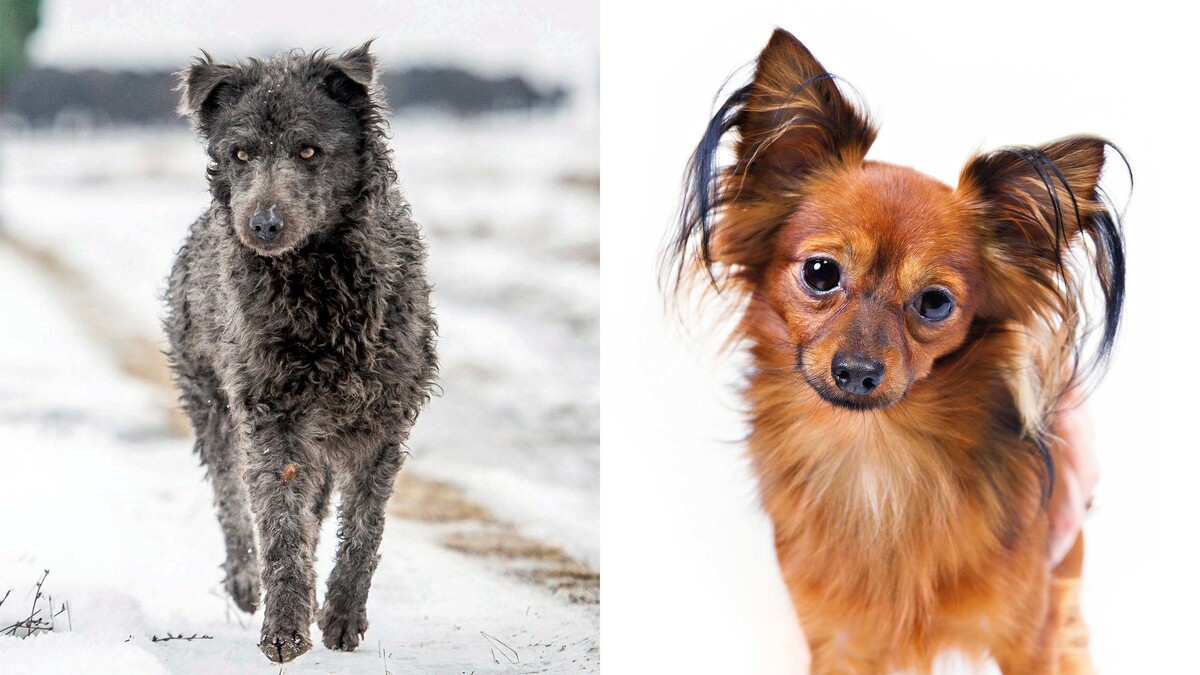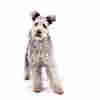The mudi (left), a Hungarian farm dog, and the Russian toy are the most recent breeds recognized by the American Kennel Club.
Sandor Ujvari / MTI / AP; American Kennel Club / AP
hide caption
toggle legend
Sandor Ujvari / MTI / AP; American Kennel Club / AP

The mudi (left), a Hungarian farm dog, and the Russian toy are the most recent breeds recognized by the American Kennel Club.
Sandor Ujvari / MTI / AP; American Kennel Club / AP
NEW YORK – An athletic Hungarian farm dog and small pet of old Russian aristocrats are the latest breeds in the American Kennel Club’s purebred line.
The club announced on Tuesday that it recognizes the Russian toy and the mudi. This means they are eligible to compete for the best in show at many American dog shows, including the AKC’s big annual championship and the prestigious Westminster Kennel Club show.

The mudi (pronounced as “moody”) originated from long lines of Hungarian sheepdogs before a museum director became interested in the breed and gave it a name around 1930. Fans say the shaggy dogs in size Average are vigorous, versatile and hardworking, able to herd sheep, hunt wild boars, catch rats and participate in dog sports such as agility and dock diving.
“They’re very insightful, and they have a subtle quality,” and are very easy to train, but they need things to do, said Kim Seiter, canine agility trainer in Oak Ridge, New Jersey, who has four. . “They are not for the inactive person.”

Dogs – the correct plural is “mudik” – were featured on postage stamps in their homeland in 2004, as were other Hungarian breeds.
The Russian toy developed from small English terriers that wowed Russian elites in the early 1700s. The small dogs – believed to weigh no more than 6.5 pounds (2.7 kg) – have a silky figure. long legs, a cheerful expression and a lively demeanor, according to the breeders.
“They are extremely affectionate” with their owners, but can be reserved with strangers and need to meet a lot of new people as puppies, says Nona Dietrich of Minnetonka, Minnesota, breeder and member of the Russian Toy Club of America. “And they’re funny. They’ve got a hell of a attitude.”

The AKC is the oldest purebred dog registry in the United States. It recognizes 199 breeds, including the two newcomers, and acts as the governing body for numerous dog shows.
Recognition requirements include having at least 300 purebred dogs in at least 20 states and promulgating a breed standard that specifies ideal characteristics, from temperament to toe. Many popular hybrid or “designer” breeds, such as Labradoodles and Puggles, go unrecognized, but there is a chance they will one day if breeders decide to pursue them.

Some animal rights and welfare advocates lament the dog breeding and purebred market, saying they are stimulating puppy mills and blocking adoptable animals in shelters.
The AKC says breeding can be done responsibly and preserves somewhat predictable characteristics that help people find and engage with the right dog for them.

